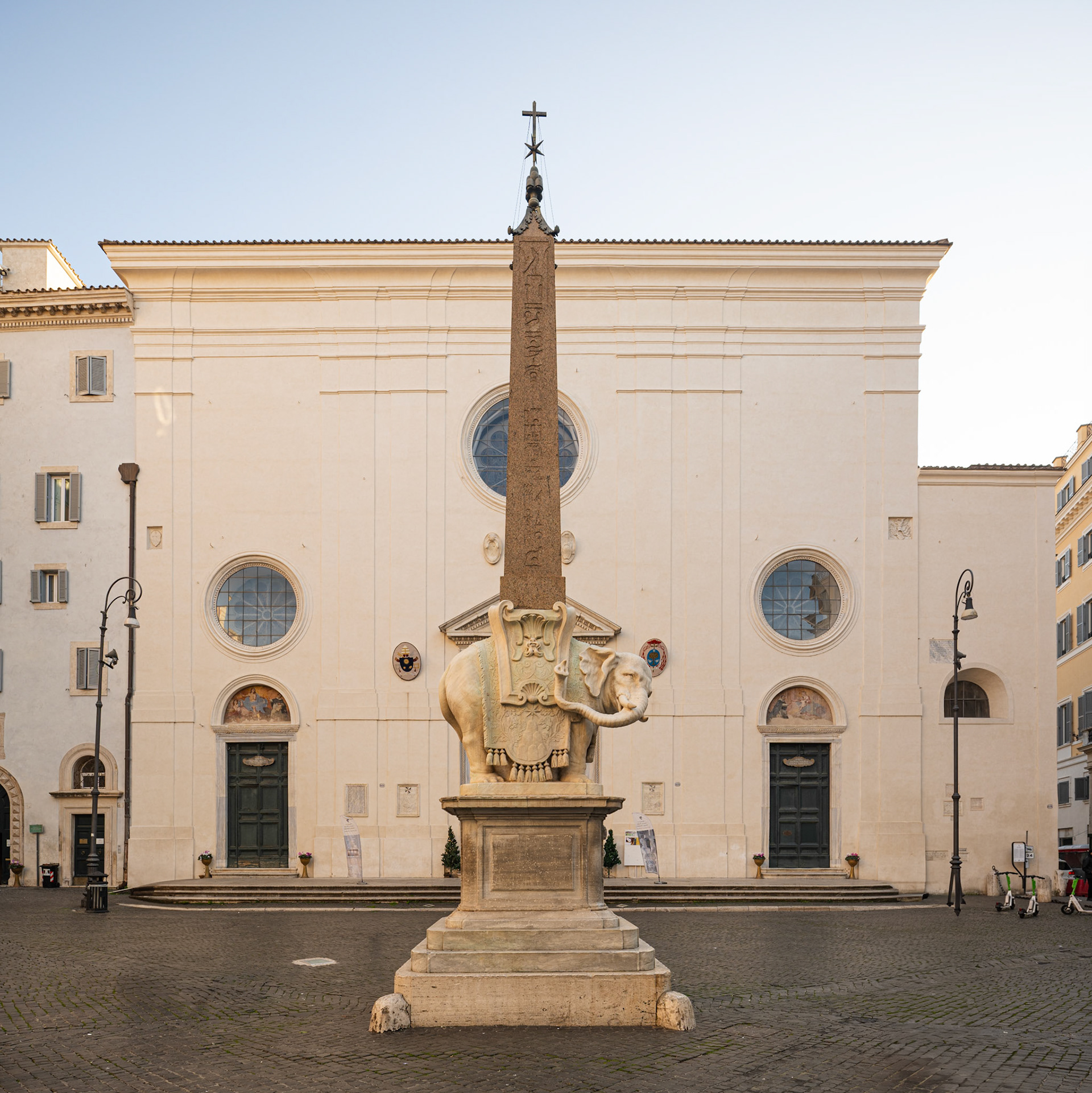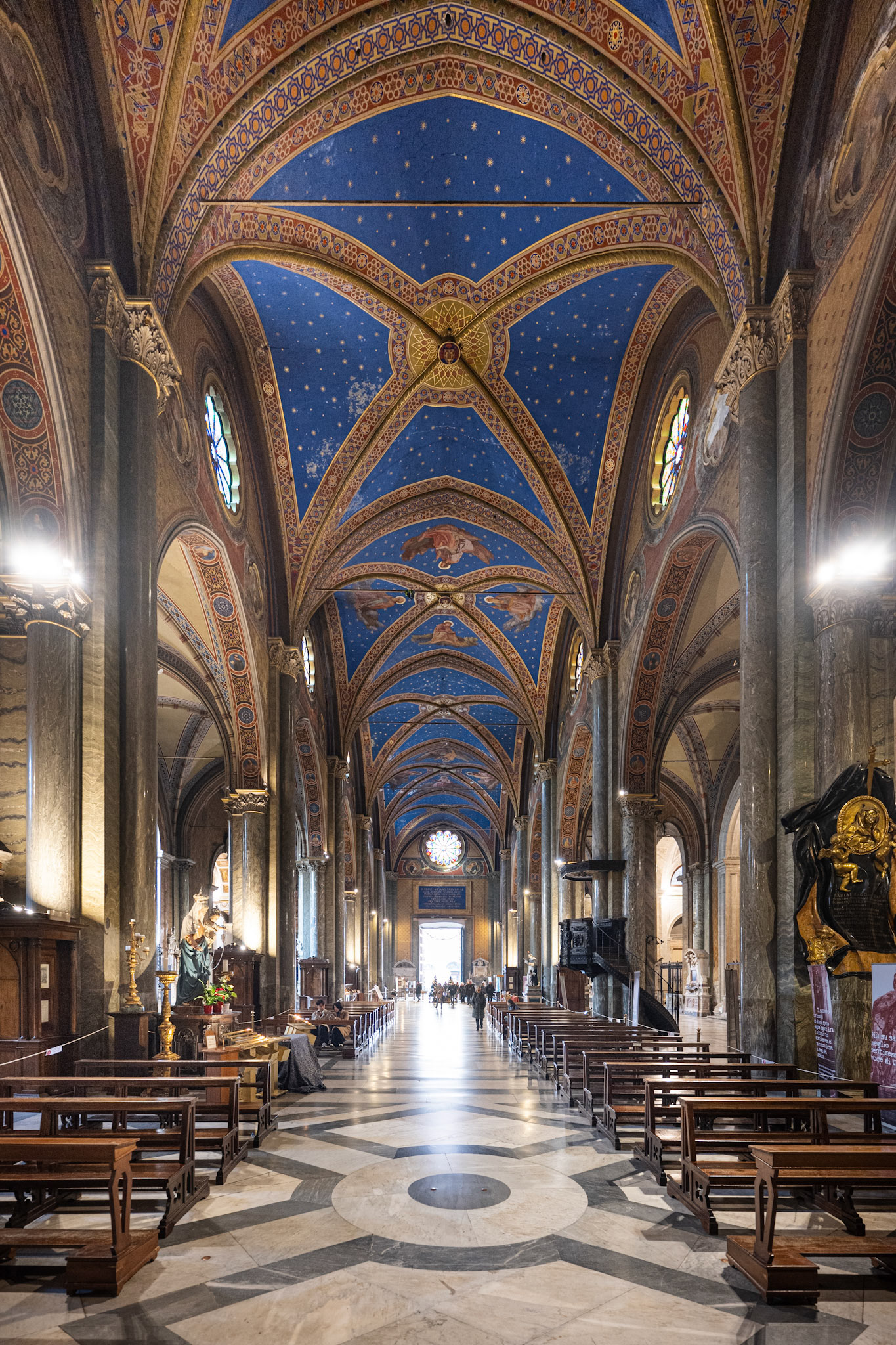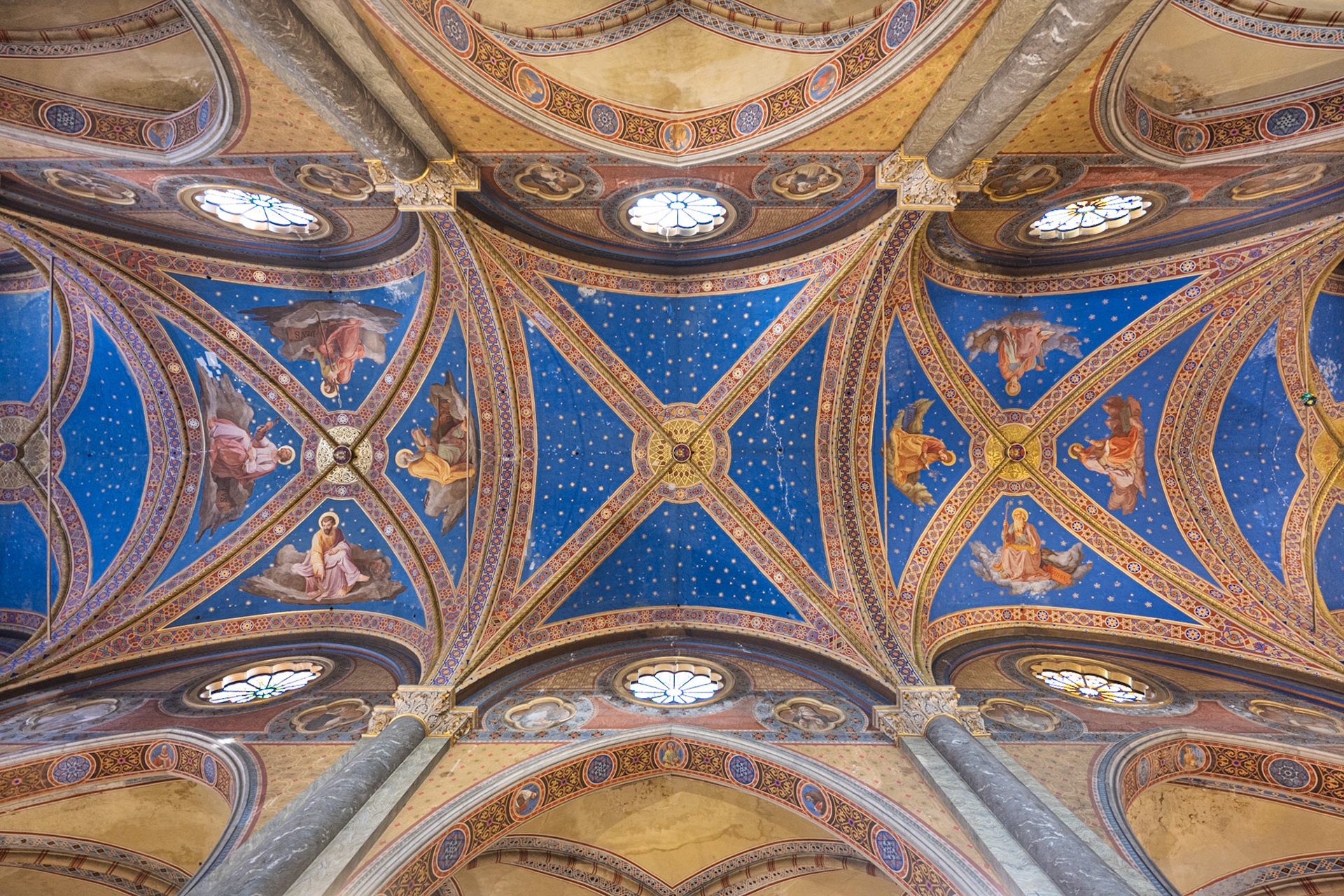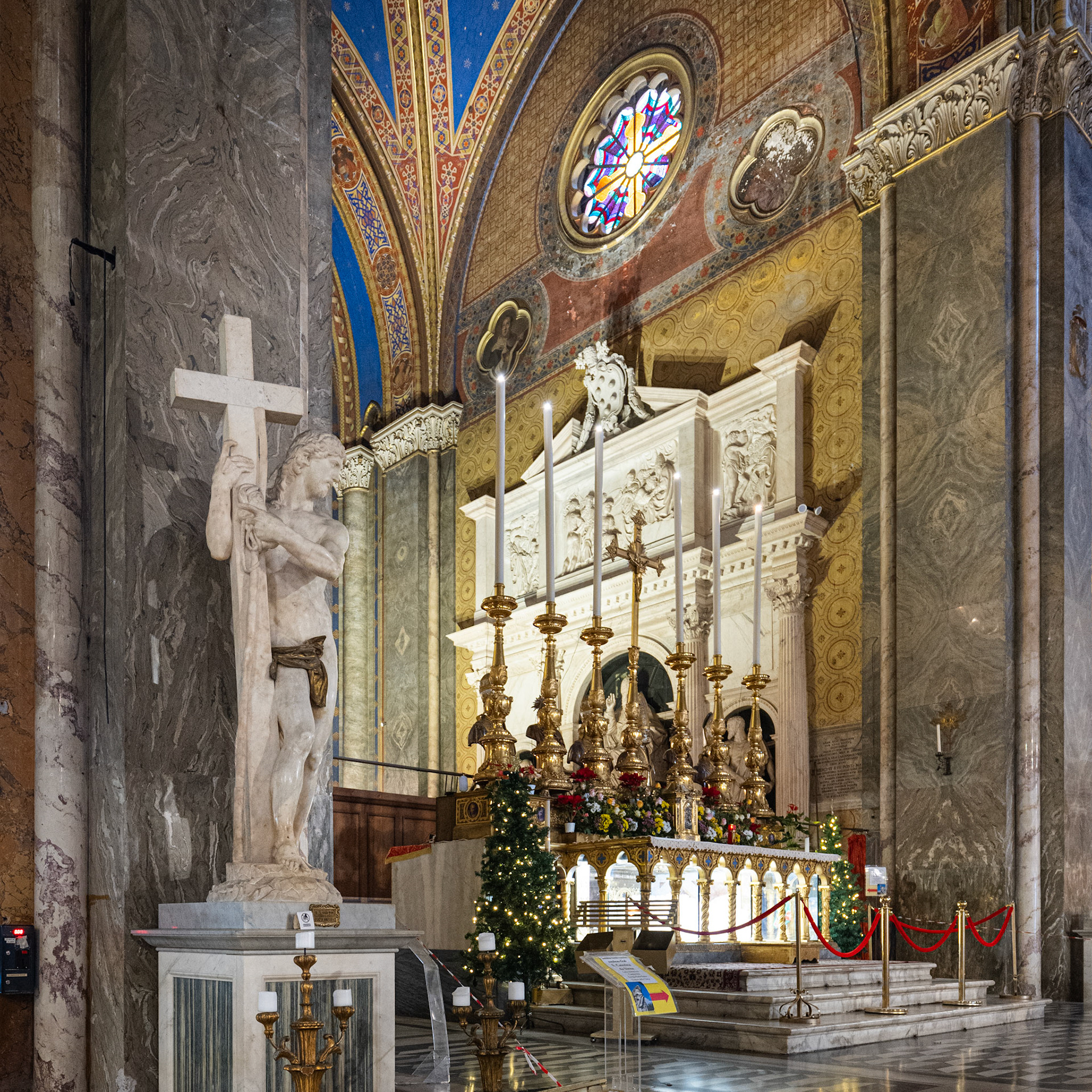The Basilica di Santa Maria sopra Minerva, located near the Pantheon, is one of the few Gothic churches in Rome. The Dominicans began constructing the church in 1280, on the site of an ancient Roman temple - believed to have been dedicated to the goddess Minerva, modeling it on their renowned church of Santa Maria Novella in Florence. The Renaissance façade designed by Carlo Maderno was completed in 1725.
In front of the basilica stands Bernini's Elephant and Obelisk (1667), an intriguing sculpture featuring an ancient Egyptian obelisk mounted on the back of a cheerful elephant, designed by Gian Lorenzo Bernini and executed by his pupil Ercole Ferrata. The obelisk, discovered during excavations, once stood in the temple precincts and now serves as a link between Rome’s ancient and modern spiritual heritage.

Elephant and Obelisk, Bernini, 1667
The Gothic architecture features soaring arched vaults, painted in a deep blue with gilded stars and accented with vibrant red ribbing, a decorative scheme added during a significant Neo-Gothic restoration led by Girolamo Bianchedi between 1848 and 1855.

Basilica di Santa Maria Sopra Minerva

Basilica di Santa Maria Sopra Minerva - ceiling frescoes
Among the church’s artistic treasures is Michelangelo’s Cristo della Minerva (1521), also known as Christ the Redeemer. This lifelike marble sculpture, located to the left of the main altar, depicts Christ carrying the cross, embodying Michelangelo’s mastery of form and expression.

Christ the Redeemer statue by Michelangelo
The church’s historical significance extends beyond its architecture. In 1628, the adjacent convent was designated as the seat of the Congregation of the Holy Office, where the Roman Inquisition held its secret meetings. It was here, in 1633, that Galileo Galilei famously abjured his support for the Copernican theory.
You may also like